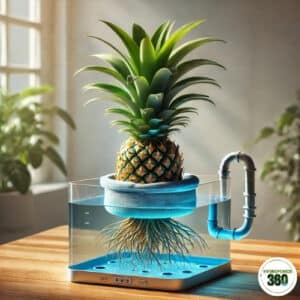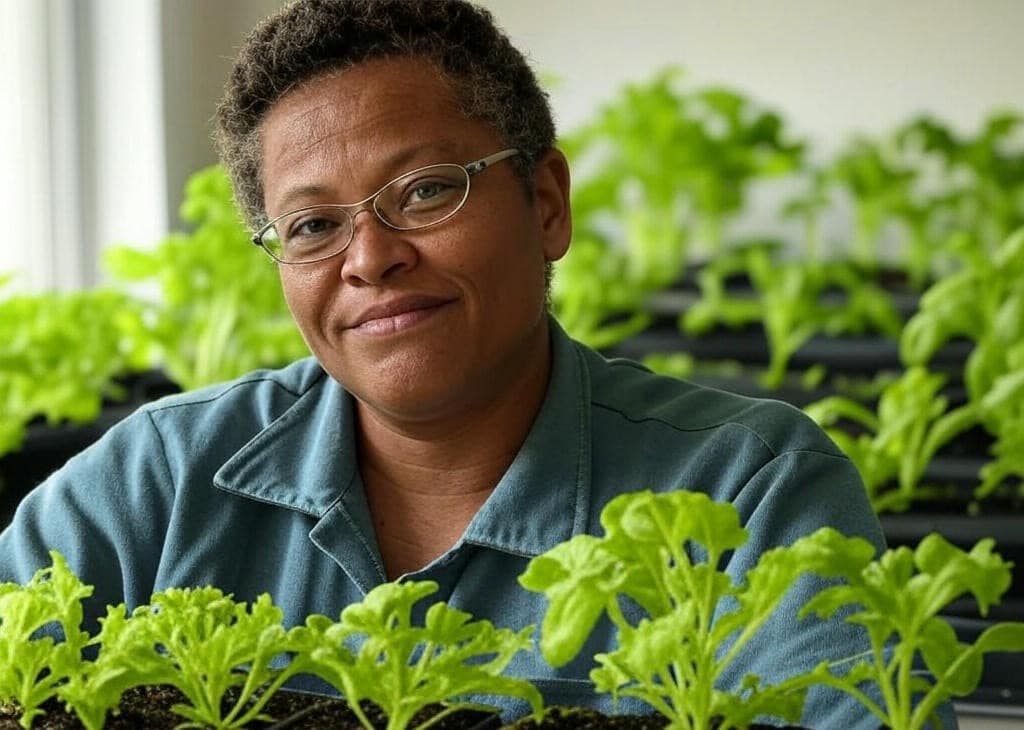Tropical Innovation: Hydroponic Pineapple in Farming
Table Of Content
As a hydroponic specialist who’s spent over a decade designing systems for everything from lettuce to strawberries, one of the most fascinating and underexplored areas in our field is the cultivation of pineapple (Ananas comosus) using hydroponics. Yes, you read that right — the sweet, tropical fruit often associated with sprawling plantations and red volcanic soil can actually thrive in a soil-less environment with the right system and strategy.

Why Grow Pineapples Hydroponically?
Pineapples are traditionally grown in tropical climates and can take 18–24 months to mature when cultivated in soil. With hydroponics, we aim to optimize growth conditions, reduce pests and diseases, and accelerate fruiting cycles. Although growing pineapples hydroponically is not yet mainstream due to its complexity and time investment, the potential for urban farming, vertical setups, and controlled-environment agriculture makes this an exciting frontier.
Benefits of Hydroponic Pineapple Farming
- Water Efficiency: Uses up to 90% less water than soil farming.
- Space Optimization: Great for vertical and modular systems in greenhouses.
- Pest Control: Easier to manage pest pressure without soil-borne pathogens.
- Nutrient Management: Direct control over nutrient delivery leads to optimal plant health.
- Cleaner Produce: No dirt means cleaner fruit with reduced post-harvest handling.
Pineapple Cultivars Best Suited for Hydroponics
When it comes to growing pineapples hydroponically, not all cultivars are created equal. Choosing the right variety for your setup can influence everything from growth rate to fruit quality and even structural stability in your system. Here are the top contenders:
-
Smooth Cayenne
This is the most widely grown cultivar globally and is known for its:
- Rapid growth rate
- High juice content
- Large, cylindrical fruit (2–2.5 kg)
Hydroponic Notes:
- Needs reinforced support or trellising due to its size.
- Best suited for larger Dutch bucket systems or greenhouse environments with plenty of space.
- It reliably produces suckers for propagation.
-
Queen Pineapple
A popular variety in Asia and Australia, the Queen cultivar is:
- Smaller and more compact
- Golden-yellow flesh with intense sweetness
- Excellent aroma and low fiber content
Hydroponic Notes:
- Ideal for small-scale or vertical hydroponic farms
- Suitable for urban growers with limited space
- Slightly slower to fruit but more tolerant of cooler climates
- MD2 (Gold Extra Sweet)
The premium variety that dominates global exports:
- Exceptionally sweet and low-acidic
- Uniform size and disease-resistant
- Long shelf life and high market demand
Hydroponic Notes:
- Performs well in controlled environments
- Requires precision nutrient management to maintain flavor consistency
- Ideal for commercial hydroponic projects targeting gourmet or organic markets
Final Tip
Choose your cultivar based on your available space, target market, and system design. For home growers, Queen is a manageable starting point, while MD2 is excellent for those aiming to sell high-end fruit.
Ideal Hydroponic Systems for Pineapples
Not all hydroponic systems suit pineapples. Due to their large rosettes and shallow root systems, the best systems include:
- Dutch Bucket (Bato Bucket) Systems: Offers excellent support and root zone management.
- Deep Water Culture (DWC): Less ideal for larger pineapples due to weight, but possible with proper stabilization.
- Coco Coir in Drip Systems: Mimics the texture of natural soils and supports the root base effectively.
- NFT (Nutrient Film Technique): Generally not recommended due to the weight and size of mature pineapple plants.
Key Growth Conditions
Like other hydroponic crops, pineapple has specific growth conditions:
1. Temperature and Light
- Optimal Temperature: 22–32°C (72–90°F).
- Light: Pineapples need at least 12–14 hours of light per day. Supplemental LED lighting is critical in controlled environments.
2. Nutrient Solution
- pH Level: 5.5–6.5
- EC (Electrical Conductivity): 1.6–2.4 mS/cm
- Macro Nutrients: Nitrogen (moderate), Phosphorus (for early root development), Potassium (high for fruiting).
- Micro Nutrients: Magnesium, Calcium, Iron, and Manganese are particularly important to prevent chlorosis and stunted growth.
3. Watering and Aeration
- Pineapples are sensitive to root rot. Overwatering is fatal.
- Use well-aerated media and ensure proper drainage.
- A drip irrigation setup is recommended for moisture control.
Propagation: Crown, Slip, or Sucker?
Hydroponically, the best way to propagate pineapples is through crowns or suckers, as slips can be too delicate. Sterilize the base and allow it to callous for 2–3 days before placing it in your growing medium. Expect root development within 4–6 weeks in optimal conditions.
Growth Timeline (Hydroponic vs. Soil)
| Growth Stage | Traditional Soil | Hydroponic Setup |
| Root Initiation | 4–6 weeks | 2–4 weeks |
| Vegetative Growth | 6–8 months | 4–6 months |
| Flower Induction | After 12 months | After 8–10 months |
| Fruit Development | 5–6 months | 4–5 months |
| Total Time to Harvest | ~24 months | ~16–18 months |
Inducing Flowering in Hydroponics
In nature, pineapples flower after significant vegetative growth. In hydroponic systems, ethylene gas or calcium carbide solution is commonly used to induce flowering once the plant is mature (typically after 40–50 healthy leaves form). Be cautious and controlled — overexposure can harm the plant.
Common Challenges in Hydroponic Pineapple Farming
- Root Rot: From poor drainage or excess humidity.
- Nutrient Lockout: Due to imbalanced pH or EC.
- Top-Heavy Growth: Requires staking or support, especially in vertical setups.
- Long ROI (Return on Investment): Slow maturity compared to leafy greens or herbs.
FAQs
Can I grow hydroponic pineapples indoors without a greenhouse?
Yes, but it requires careful environmental control. You’ll need strong full-spectrum grow lights, temperature regulation (ideally 22–30°C), and space for the large rosettes. Small-scale indoor setups with grow tents can work for hobbyists or experimental purposes.
Do pineapples need pollination to produce fruit in hydroponic systems?
No, pineapples are self-fruiting and don’t require pollination to develop fruit. In fact, commercial growers often prevent pollination to avoid seed formation, especially for smoother fruit quality.
What’s the ideal container size for a hydroponic pineapple plant?
You should aim for a container at least 3–5 gallons (12–20 liters) in volume. Pineapple roots don’t spread far but need depth for anchoring and consistent access to moisture and nutrients. Oversized containers also help avoid root stress.
Can hydroponic pineapples be grown alongside other fruits or plants?
Yes, but compatibility is limited. Pineapples are heavy feeders, and their growth cycle is long, so pairing them with fast-harvest crops like leafy greens is impractical. However, you can group them with other tropical or perennial hydroponic plants like banana or turmeric in large systems.
How do I know when a hydroponic pineapple is ready to harvest?
Look for these signs:
The fruit has turned a golden-yellow hue, especially near the base.
A sweet aroma is noticeable at the base of the fruit.
The “snap test”: tug a leaf from the top — if it comes out easily, it’s ready.
Do hydroponic pineapples taste different from soil-grown ones?
Yes, often better. Controlled hydroponic environments allow precise nutrient tuning, which can enhance sweetness and aroma. Many growers report more consistent flavor and size due to the elimination of soil-based variability.
Can I use rainwater or tap water in hydroponic pineapple systems?
Rainwater is great but must be filtered for debris or contaminants.
Tap water may work, but always check for chlorine, chloramine, and high mineral content. Use RO (Reverse Osmosis) water if water quality is inconsistent.
Is pineapple hydroponics profitable for commercial farming?
Potentially — especially if marketed as organic, local, or exotic produce. However, due to the long growth cycle and infrastructure costs, success depends on market demand, premium pricing, and efficient space utilization.
What happens to the plant after harvesting the pineapple?
After the main fruit is harvested, the plant will stop vertical growth but may produce suckers (side shoots) and ratoons (basal shoots). These can be used to start new plants, often with even faster growth compared to crowns.
Table Of Content
